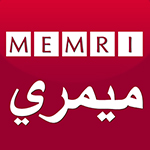An excerpt from:
And the Lion Shall Dwell With the Fish
The Holocaust Experience as Reflected by Five Installation Artists
by Yehudit Shendar
Classical and Near Eastern Studies Department
University of Minnesota
Now Senior Curator at Yad Vashem (Israel)
Pier Marton
The prophet Joel said tell your children about the exodus.
Here we are a generation after the Holocaust and it is as unbelievable as the waters parting!
My parents’ generation will slowly disappear, but the energy that created the Holocaust is still there.
To forget is to kill twice. P.M. [1]
Pier Marton was born in France. His father was in the French Resistance. Being an artist and photographer, he forged documents and helped hide German deserters, actions for which he was almost shot by the German Gestapo. At the same time, Marton’s mother was hiding in Hungary, in the back room of a commandant’s office, sharing the space with eight other people, including a baby.
Marton grew up in a Parisian apartment building that contained active memories of the Holocaust years in France. Years before, his father had created an escape route in the same apartment by sawing through an iron grill, which could be removed quickly. The presence of an escape route served as a constant reminder to Marton that one had to have fast legs to stay alive – legs his great grandfather and grandmother did not have. They perished in Auschwitz.
After his father’s death, Marton left France for America. For him, living in France was like living in a place where one needs constantly to know the route for escape. That claustrophobic cloud prompted his departure from France, where Marton felt he was surrounded by the same people who had betrayed his grandmother. Marton recognized the direct linkage of his family annals to his artistic oeuvre: “Knowing our parents had almost been killed many times, we grew up with a particular chill in our bones…in our homes and elsewhere, our families’ grief, terror and anger found very little room to heal. I am a witness to my parents, their wound is mine.” [2]
However, unlike Altman and Rossmer, Marton elected to escape from European soil, where the Holocaust occurred. He carried with him his Jewishness as a badge of shame, and only in his new world could he free himself from his haunting ghost-the shame of being Jewish. Thus, in Marton’s installation Jew, which includes a powerful, short documentary film Say I’m a Jew, the viewer is immersed into the artist’s search for Jewish identity among the second generation. Seated on wooden benches in a simulated railroad cattle car, the viewer sees a video of collaged interviews with men and women who, like Marton, are children of European survivors now living in the United States. Those who speak on Marton’s video describe their struggle of carrying the legacy and their rejection and acceptance of their Jewish heritage. The chorus of different voices says things that are hard to say and hard to hear. For Marton, to say the unspeakable is the only process for liberation – “to communicate one’s own inhibitions, own oneself, the positive and negative, neglecting neither.” [3]
The purpose of the exhibit for Marton does not end with self-healing, nor is it about creating guilt. It is about “what we can do to fight racism and anti-Semitism.” [4]
This last remark by Marton brings to surface the complexity of second-generation issues and the fact that the artist’s inner realm is not limited to his personal memories. In fact, artists like Marton simultaneously wish to express the collective memory, the subconsciousness of the human race, from a Jewish perspective. This underlying universal moral objective is the backbone of all the installations in this exhibition. The stimulus in each case was a personal, firsthand experience.
[1] Pier Marton in Karen Boren Swedin’s “To Forget the Past is to Kill Twice,” Today, 5 April 1991.
[2] Pier Marton, artist statement, JEW (Chicago: Spertus Museum, 1990).
[3] Gary Reynolds, “Public Secrets/Private Revelations,” Changing Channels (Minneapolis: UC Video, May 1985), 6.
[4] Mary Jane Jacob, The Artist in Society, Kunst Arbeit (Chicago: State of Illinois Art Gallery, 1992).


 Laure Adler & Ses Invités/Ses sujets
Laure Adler & Ses Invités/Ses sujets MEMRI
MEMRI![Magazine d’Actualité Internationale [abonnez-vous aux podcasts!] Arte Reportage Magazine d’Actualité Internationale [abonnez-vous aux podcasts!]](https://www.arte.tv/i18n/3838018,property=data,v=1.png) Arte Reportage
Arte Reportage Frontline
Frontline Independent Lens
Independent Lens